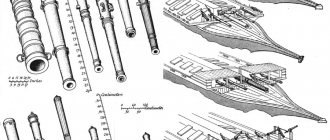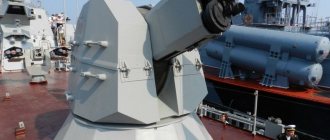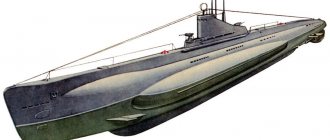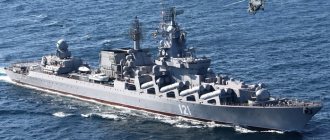In St. Petersburg, on July 25, Navy Day is celebrated on a large scale. NEVSKIE NEWS delved into history and remembered how shipbuilding began in Russia.
Nevskie News / Maya Kotelova
In St. Petersburg on the morning of July 25, a parade was held in honor of Russian Navy Day. Supreme Commander-in-Chief Vladimir Putin arrived in the city for the solemn event, which started in Kronstadt at 11:00. NEVSKIE NEWS tells what kind of holiday this is.
Established by decree in 2006
The Memorial Day of the Navy of the Russian Federation began to be celebrated in 2006. It was established by Russian President Vladimir Putin by his decree “On the establishment of professional holidays and memorable days in the Armed Forces of the Russian Federation.” The memorable date is celebrated every day on the last Sunday of July.
On Navy Day, people who guard Russia's maritime borders celebrate their professional holiday. In addition to them, this is a memorable day for those who connect years of life and service with ensuring the combat readiness of ships and units of the Navy, family members of military personnel, workers and employees of naval institutions and enterprises, veterans of the Great Patriotic War and the Armed Forces.
Nevskie News / Maya Kotelova
Story
The official establishment of the Russian Navy led to unprecedented growth in the field of shipbuilding, not only military, but also commercial. The fact is that the decree signed in 1696 contained more or less clearly formulated instructions for actions to improve command and control of the fleet at all levels, technical nuances for building ships, etc. This made it possible to make the fleet a single centralized system.
Such a reduction to a unified framework made it possible to improve the command and control of the fleet and significantly increase its combat effectiveness as a combat unit in naval battles.
The establishment of a single fleet over time contributed to its expansion in technical and material terms, the creation of its new divisions - the Black Sea, Baltic, Azov, Pacific, Northern, as well as the Caspian flotilla.
In addition to the development of combat shipbuilding, the creation of a unified Navy helped to improve the base of merchant ships, as well as ships for travel. In the 18th century, great seafarers such as E. Putyatin and V. Bering carried out their activities.
During World Wars I and II, the Russian navy won numerous naval battles, which contributed significantly to overall strategic and tactical success.
This year marks 325 years
In 2022, the Russian fleet will turn 325 years old. His birthday is considered to be October 20 (30 according to the new style) 1696. On that day, the Boyar Duma approved the decree of Peter the Great “There will be sea vessels” on the creation of a regular fleet.
The first known armed sailing ship of the Western European type is a ship called "Frederik". It was built in 1636 in Russia by foreign craftsmen with the help of Russian carpenters and blacksmiths. Despite his Russian origin, he flew the flag of Holstein.
30 years later, a warship was built for the first time in Russia under government order. The ship "Eagle" was built by decree of Alexei Mikhailovich dated June 19 (29), 1667 in the village of Dedinovo, Kolomensky district. A white-blue-red tricolor flag was raised over the ship, which became the prototype of the state flag of the Russian Federation.
In 1688, in one of the barns of the village of Izmailovo near Moscow, Peter the Great discovered a boat given to his father, Tsar Alexei Mikhailovich. By order of the tsar, it was repaired and then launched into the water - first on the Yauza River, then on the Prosyanaya Pond and, finally, on Lake Pleshcheyevo (Pereslavskoye). There Peter built the Fun Flotilla, which became the prototype of the Russian fleet. Currently, the boat is kept in the Central Naval Museum of St. Petersburg.
Nevskie News / Maya Kotelova
In 1693, Peter the Great went to Arkhangelsk. This city at that time was the only Russian port. Here the future emperor first went to sea on the yacht “St. Peter”, built by Dvina carpenters. In this city, Peter built his first serious shipyard - Solombalskaya (now the oldest shipbuilding enterprise in Russia, "Red Forge"). At the same time, the frigate “Apostle Paul” was laid down on it.
After an unsuccessful campaign against the Azov fortress in 1695, which showed the need for a powerful fleet, Peter the Great launched large-scale construction of ships near Voronezh. He ordered the laying down of 1,300 plows (large rowing boats), 300 smaller boats and 100 rafts for transporting troops and supplies. However, the main strength of the Russian army turned out to be 22 galleys, four fire ships, three frigates and two galleasses, made according to the Dutch model.
By 1696, Russia already had its own small but quite combat-ready fleet. This helped take the Azov fortress during the second siege. Tsar Peter the Great personally led the ships on the Principium galley. After capturing an important strategic point, Russia gained access to the Azov and Black Seas.
On October 20 (30), the Boyar Duma approved the decree of Peter I on the creation of a regular fleet. Then the authorities made a fundamental decision: “There will be sea vessels.” In fact, Russia approved the first shipbuilding program in history.
Nevskie News / Maya Kotelova
Interesting Facts
For several years, the Russians could not decide on the founding date of the Russian Navy. Some put forward the idea that this is the day when Peter I found a shoe in his great-uncle’s barn, which he called “the grandfather of the Russian fleet.” Others adhered to the date of the appearance of the fleet on Lake Pleshcheyevo. Still others recalled his entry into the White Sea. But one thing was constant - the connection between the fleet and Emperor Peter I.
The first ship in Russia was created in 1667 on the Oka River. The double-deck Eagle had 3 masts and was built with the help of Dutch craftsmen.
When a white flag is raised on a ship, it does not mean that the crew is surrendering. It just means the captain wants to negotiate. But if all the flags (banners) are lowered on the ship, then this indicates the surrender of the captain and his crew.
The average age of Russian Navy ships is more than 25 years.
St. Andrew's flag
In March 1697, the so-called Great Embassy left Russia for Europe. Tsar Peter I was among its members, but traveled incognito, hiding under the name of Peter Mikhailov.
During this trip, the king personally studied shipbuilding at shipyards in the Netherlands. Ship supplies were then purchased for the construction of the Russian fleet. Engineers, naval officers and sailors, and other specialists were hired for Russian service.
The military naval order was approved by the central fleet management body. This structure was headed by Admiral Fedor Golovin. In 1700 it was renamed the order of Military Naval Affairs, and in 1708 - the Admiralty. He was in charge of the construction, armament and supply of the fleet.
In 1712, the Admiralty Prikaz was transformed into an economic body - the Moscow Admiralty Chancellery. Its functions were transferred to the St. Petersburg Admiralty Chancellery and the Chancellery of the Military Marine Fleet.
On December 1 (11), 1699, Peter the Great proclaimed the banner with the St. Andrew's Cross the official flag of the Russian navy. The cloth was initially divided into three horizontal stripes (from top to bottom: white, blue, red), which were covered with an oblique blue cross. It symbolized Apostle Andrew the First-Called, the heavenly patron of Russia. In addition, the cross also meant the first Russian military order of the Holy Apostle Andrew the First-Called, established at the same time.
Nevskie News / Maya Kotelova
Russian Navy Day: history and traditions.
On October 30 (October 20, old style), 1696, the boyar duma, on the proposal of Tsar Peter I, adopted a resolution “There will be sea vessels...”, which became the first law on the fleet and official recognition of its foundation.
During the Northern War of 1700-1721, the Baltic Fleet was created, which promoted Russia to one of the major naval powers. The first warships for him were built in 1702-1703 at the mouth of the Syas River on Lake Ladoga and on the Svir River. In 1703, the base of the Russian fleet in the Baltic was founded - Kronshlot (later - Kronstadt).
During the Northern War, the main tasks of the fleet were determined, the list of which remains practically unchanged to this day, namely: the fight against the enemy’s naval forces, the fight on sea communications, the defense of one’s coast from the sea direction, assistance to the army in coastal areas, striking and ensuring an invasion of enemy territory from the sea. The proportion of these tasks changed as material resources and the nature of armed struggle at sea changed. Accordingly, the role and place of individual branches of the fleet that were part of the fleet changed.
Before the First World War, the main tasks were carried out by surface ships, and they were the main branch of the fleet. During the Second World War, this role for some time passed to naval aviation, and in the post-war period, with the advent of nuclear missile weapons and ships with nuclear power plants, submarines established themselves as the main type of force.
Before the First World War, the fleet was homogeneous. Coastal troops (marines and coastal artillery), which existed since the beginning of the 18th century, were not organizationally part of the fleet. In 1906, submarine forces were born and began to develop as a new branch of the Navy. In 1914, the first naval aviation units were formed, which in 1916 also acquired the characteristics of an independent type of force. The Navy as a heterogeneous strategic association was finally formed by the mid-1930s, when the Navy organizationally included naval aviation, coastal defense and air defense units.
During the formation of the regular Russian fleet, its organizational structure and functions were unclear. In 1717, by decree of Peter I, an Admiralty Board was formed for the day-to-day management of the fleet. In 1802, the Ministry of Maritime Forces was formed, which was later renamed the Naval Ministry and existed until 1917. Organs for combat (operational) command and control of naval forces appeared after the Russo-Japanese War with the creation of the Naval General Staff in 1906. On January 15, 1938, by resolution of the Central Executive Committee (CEC) and the Council of People's Commissars (SNK), the People's Commissariat of the Navy was created, within which the Main Naval Headquarters was formed.
Permanent groupings of forces in maritime theaters took shape as the Russian state solved historical problems related to the acquisition of access to the World Ocean and the inclusion of the country in the world economy and politics. In the Baltic, the fleet existed continuously since May 18 (May 7, old style) 1703, the Caspian flotilla - from November 15 (November 4, old style) 1722, and the fleet on the Black Sea - from May 13 (May 2, old style) 1783. In the North and the Pacific Ocean, naval force groupings were created on a temporary basis or, without significant development, were periodically abolished. The current Pacific and Northern fleets have existed as permanent groupings since April 21, 1932 and June 1, 1933, respectively.
The fleet received its greatest development by the mid-1980s. At this time, it included four fleets and the Caspian Flotilla, which included more than 100 divisions and brigades of surface ships, submarines, naval aviation and coastal defense.
The Russian Navy is the successor to the Russian Navy and the USSR Navy, and consists of naval strategic nuclear forces and general-purpose naval forces. It includes surface forces, submarine forces, naval aviation and coastal forces, which include coastal missile and artillery forces and marine infantry.
Organizationally, the Navy consists of four operational-strategic formations: the Northern, Pacific, Baltic and Black Sea fleets, as well as the Caspian flotilla.
The Navy is capable of delivering nuclear strikes on enemy ground targets, destroying enemy fleet groups at sea and bases, disrupting the enemy’s ocean and sea communications and protecting its maritime transportation, assisting the Ground Forces in operations in continental theaters of war, landing amphibious assault forces, and participating in repelling landing forces. enemy and perform other tasks.
According to the Commander-in-Chief of the Navy, Vladimir Korolev, currently from 70 to 100 ships of the Russian Navy are constantly in various areas of the World Ocean, performing their functions.
Throughout its history, the fleet has played an important role in the fate of Russia. World history forever captures the legendary battles of the Russian fleet at Gangut (now the Hanko Peninsula in Finland), Tendra, Sinop, Chesma, the most important operations during the First World War and the Great Patriotic War.
The history of celebrations in honor of the fleet dates back to the time of Peter I. The reason for the first real naval parade was the victory won by the Russian fleet on July 27 (August 7, new style) in 1714 in the Battle of Gangut during the Northern War. It became the first naval victory of the Russian fleet in Russian history. The Gangut victory was solemnly celebrated in St. Petersburg. The celebration continued for several days. In his decree, Peter I ordered that the day of the Gangut victory be celebrated annually on July 27 with solemn services, naval parades and fireworks. This day has become a kind of holiday for the Navy. Later, the celebration of the victory was limited only to a solemn prayer service. In the middle of the 19th century, the tradition of the times of Peter I was revived: on July 27, parades of ships decorated with flags began to be held and gun salutes sounded.
In 1917, the holiday was canceled. Since 1920, at the suggestion of the Headquarters of the Baltic Sea Naval Forces, on the day closest to May 18, Red Fleet Day began to be celebrated in Petrograd (now St. Petersburg). On May 18 (May 7, old style) in 1703, the Russian regular fleet won its first victory in the Baltic. In the boarding battle, the Swedish boat “Gedan” and the shnyava (a small two-masted ship with straight sails) “Astrild” were captured. Subsequently, the date of this battle was accepted as the day of the emergence of the Baltic Fleet.
The Navy Day holiday in the USSR was first celebrated on July 24, 1939 on the basis of the resolution of the Council of People's Commissars of the USSR and the Central Committee of the All-Union Communist Party of Bolsheviks dated June 22, 1939, by which it was established. Navy Day was to be celebrated annually on July 24th. The date of the celebration of Navy Day was moved to the last Sunday of July by the decree of the Presidium of the Supreme Soviet of the USSR dated October 1, 1980 “On holidays and memorial days” and subsequent legislative acts.
Traditionally, the celebration of Navy Day begins with the ceremonial formation of the personnel of naval units and the ritual of raising the St. Andrew's flag and flags on ships. Naval parades and military sports festivals are held on this day at the bases of the Northern, Pacific, Baltic and Black Sea fleets, as well as the Caspian flotilla. Parades of warships on this day have been held annually since 1939, and were not held only during the Great Patriotic War (1941-1945).
In 2022, on behalf of the President, for the first time in modern history, the main naval parade was held in St. Petersburg. In terms of the scale of the event, the number of ships and aircraft involved, this event could be compared with the Victory Parade on May 9 on Red Square in Moscow.
Andrey Eremenko Candidate of Cultural Studies, Associate Professor, Head of the Department of History, Ethnography and Nature, KGIAMZ
Creation of the Baltic Fleet
On January 14 (25), 1701, Peter the Great opened a school of mathematical and navigational sciences in Moscow. It turned out to be the first naval educational institution in the history of Russia.
In 1702, the tsar came to the conclusion that new ships were required for the combat purposes of the outbreak of the Northern War. A shipyard for the construction of the Baltic Fleet was founded on the Syas River.
In 1703, the city of St. Petersburg was founded at the mouth of the Neva. According to the idea of Peter the Great, it was supposed to become the key to the Baltic Sea, creating a convenient waterway for trade and a base for the fleet. At the same time, the first naval ship for the Baltic Fleet was built - the frigate "Standart".
Nevskie News / Maya Kotelova
Until 1709, small ships were built at the shipyard. Larger ones began to be built after the victory at Poltava in 1709. The first battleship laid down at the Admiralty Shipyard was named in honor of this battle. It was Poltava, built in 1712.
The Admiralty shipyards still exist today. This is one of the oldest and leading St. Petersburg shipbuilding enterprises.
Naval victories of pre-Petrine eras
Of course, this does not mean that before Peter I the Russians had no fleet at all. On the contrary, the list of Russian victories at sea is quite impressive.
Kushevsky/Wikipedia
The first mentions of Russian naval expeditions preserved in chronicles date back to the year 860, when a major Russian naval campaign against Constantinople took place. The reason was attacks on fishermen and insults inflicted on Russian merchants in Constantinople. Sources indicate that Russian soldiers on 360 boats penetrated the Bosporus, landed on the shore and besieged the capital of Byzantium for a week. As a result, Emperor Michael III entered into negotiations with the Russians, paid them a considerable ransom in gold and concluded a peace treaty.
Victorious Russian sea voyages took place in different centuries, and not only in the Black Sea. So, in 1187, the Novgorodians undertook a sea voyage known as the capture of Sigtuna. To protect Russian lands from Swedish raids, they sailed across the Baltic Sea, landed on the Swedish coast and captured Sigtuna, the city on the site of which Stockholm was later founded.
Further, the list of victories of Russian soldiers at sea is extensive - from the liberation of the Oreshek fortress by the Novgorod-Pskov troops, captured in 1348 by the troops of the Swedish king Magnus, to the naval battle with the Swedes near Kotlin Island in 1656.
However, it was under Peter I that military shipbuilding became a regular, state matter, and Russia began to acquire stable positions in all the seas washing it.
How was the parade
The main naval parade started at 11:00. 54 ships showed themselves in all their glory, including three frigates from India, Iran and Pakistan, 48 aircraft and more than four thousand military personnel. Before the start of the event, Russian President Vladimir Putin greeted and congratulated the participants.
According to the head of state, Russia is constantly and successfully improving its naval armament, can detect any enemy and, if necessary, deal an inevitable blow to it.
“The latest hypersonic systems that the Russian Navy is equipped with still have no analogues in the world and are constantly being improved,” the president noted.
The event program included two parade formations - in Kronstadt and on the Neva. Small missile ships, minesweepers, border guard and anti-sabotage boats sailed through the city. The newest frigate of Project 22350 “Admiral Kasatonov”, the corvette “Stoikiy”, the large landing ship “Olenegorsky Gornyak”, the small missile ship “Grad Sviyazhsk”, the non-nuclear submarine “Kronstadt” and six sailing ships are located statically in the waters of the river.
Nevskie News / Maya Kotelova
After the ceremonial parade of ships and submarines, including foreign navies, aircraft took to the skies, including Su-25, Mig-31, Tu-134 and others. The sky over Kronstadt lit up in the colors of the Russian tricolor.
The parade has officially ended, but St. Petersburg residents continue to celebrate the holiday. Next year, Navy Day in Russia falls on July 31.
Dmitry Matveev
- Reviewer
Share article on social networks
- tags
- #Petersburg
- #spb
- #Putin
- #kronstadt
- #navy day
- #Russian Navy
- #naval parade
- #president of the Russian Federation
- #naval parade
- #Navy Day St. Petersburg
- #Navy
Traditions
The Russian government is aware of the importance of the Navy for the country, therefore, through various events dedicated to this memorable day, it is trying to do everything possible to restore the prestige of service in the Navy among young people, disseminating information through the media about the power and greatness of both the country’s modern fleet and its historical achievements - victories in great battles. On this day, documentary programs and films are shown on television about the great naval battles with the participation of the Russian and Soviet fleets, the history of its creation, about individual famous ships and sailors famous for their heroism.
On ships that celebrate this day in service, during trips to sea, special festive formations are organized. The management congratulates its subordinates; those who especially distinguished themselves by successful service in the fleet are presented with memorable gifts and encouragements from the commanders in front of the entire formation.











